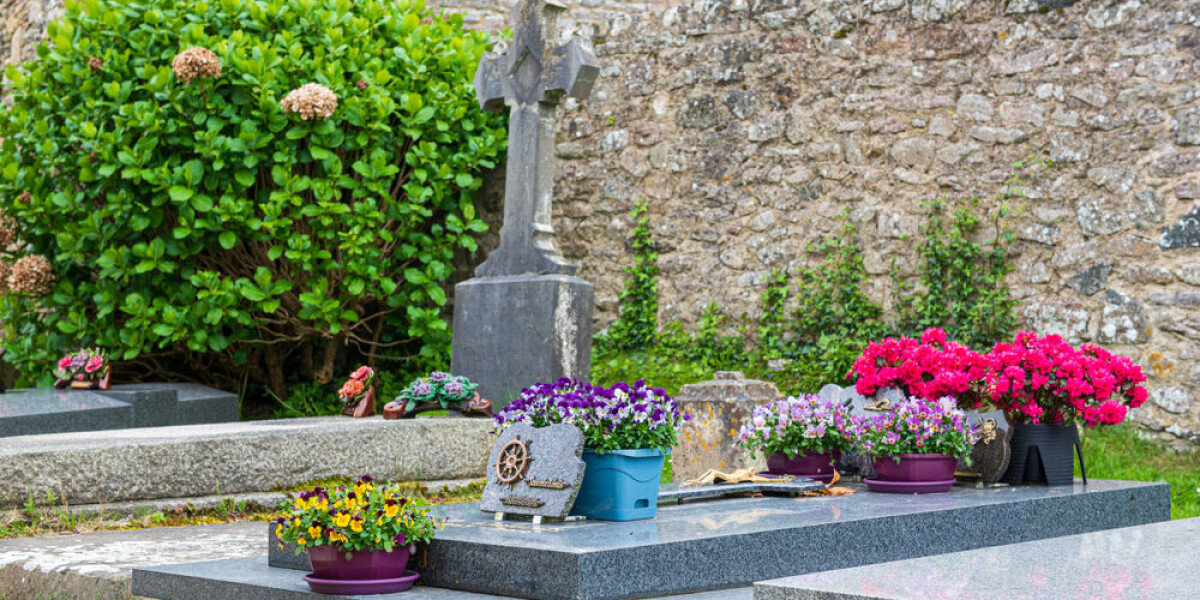
How do village burial plots work in france?
- Select a language for the TTS:
- UK English Female
- UK English Male
- US English Female
- US English Male
- Australian Female
- Australian Male
- Language selected: (auto detect) - EN
Play all audios:

THE MAIRIE IS THE BEST PLACE TO ASK WHEN IT COMES TO RESERVING A PLOT, FIGURING OUT IF YOU ARE ELIGIBLE, AND CHECKING HOW LONG THE ‘RESERVATION’ LASTS READER QUESTION: HOW DO VILLAGE BURIAL
PLOTS WORK IN FRANCE? WHAT ARE THE FORMALITIES AND HOW WOULD I GO ABOUT ORGANISING ONE? Burial is the most traditional option in France for those who pass away, but cremation is increasingly
common (the Catholic Church used to not allow it but removed the ban in 1963). It is advisable to record your wishes and let your close family know your preferences. Elderly people living
in relative isolation may wish to take out a funeral plan before their death - as offered by banks, insurers or funeral firms - so that funeral funding and organisation is automatically in
place. This can be helpful for people living abroad who may struggle with speaking French and understanding procedures. If you definitely know you want to be buried, it is advisable to
reserve a plot. HOW IS A BURIAL PLOT DEFINED? The _service public_ WEBSITE defines a burial plot as “a place in a cemetery (vault, grave) or in a columbarium (a place for urns containing the
ashes of cremated people)”. There are several categories of plot. * Individual: Reserved for a single person * Collective plot: For several people, whether family members or not * Family
plots: Reserved for members of the same family who are related to the original plot holder HOW CAN I RESERVE A SPACE IN A LOCAL CEMETERY? In theory, everyone has the right to be buried in a
cemetery. However, the rules surrounding this are governed by ARTICLE L. 2223-3 of the Code général des collectivités territoriales. To be eligible for burial in a specific commune, you must
either: * Have died in the boundary of the commune, regardless of your home address (domicile) * Or be officially domiciled in the commune, even if death occurred elsewhere However, if
there is a right to an existing family burial plot, a person can be buried in this family plot without having died or been domiciled there. Cemetery plots are managed by the mairie, and you
can check eligibility criteria on the service public website. Even if you do not meet the criteria, you can still apply to the mairie, who will consider factors including the amount of space
in the cemetery, and your connection to the commune in question. It is at the mairie’s discretion whether they will accept your request or not. READ MORE: DO RESIDENTS HAVE RIGHT TO BE
BURIED IN THEIR VILLAGE? HOW LONG DOES A PLOT RESERVATION LAST? The duration of the plot ‘lease’ is drawn up at the time of the burial plot request. The duration of the burial plot lease
begins on the date the plot is acquired. The price varies from one commune to another, and also varies depending on how in demand the cemetery is, and how much space it has. There are four
different time frames: * Graves set aside for 15 years or more * Graves laid to rest for 30 years * Graves laid out for 50 years * Perpetual graves (no time limit) A plot lease can be
extended (for example, from 15 years to 30 years) via a request to the mairie, and it depends on how much space the cemetery has free before the extension is granted. After the plot holder’s
death, management of the plot falls to their descendants or heirs. Descendents can request the renewal of the plot’s lease. WHAT HAPPENS IF THE GRAVE IS ABANDONED? The grave owner is
expected to maintain the site - either the grave or the urn - by law. If the commune authorities notice damage and deterioration to the site of the plot, it may investigate to see if it has
been abandoned. It can move to take over the plot if: * One year after informing the holder of the abandoned plot, the latter has not taken care of it * The plot in question is over 30 years
old * The last burial was at least 10 years ago RELATED ARTICLES COFFIN MATERIALS, ABANDONED PLOTS: FRANCE CHANGES RULES ON FUNERALS WHAT OPTIONS ARE THERE FOR ECO-FRIENDLY FUNERALS IN
FRANCE? MAKE SENSE OF... BURIAL AND CREMATION
